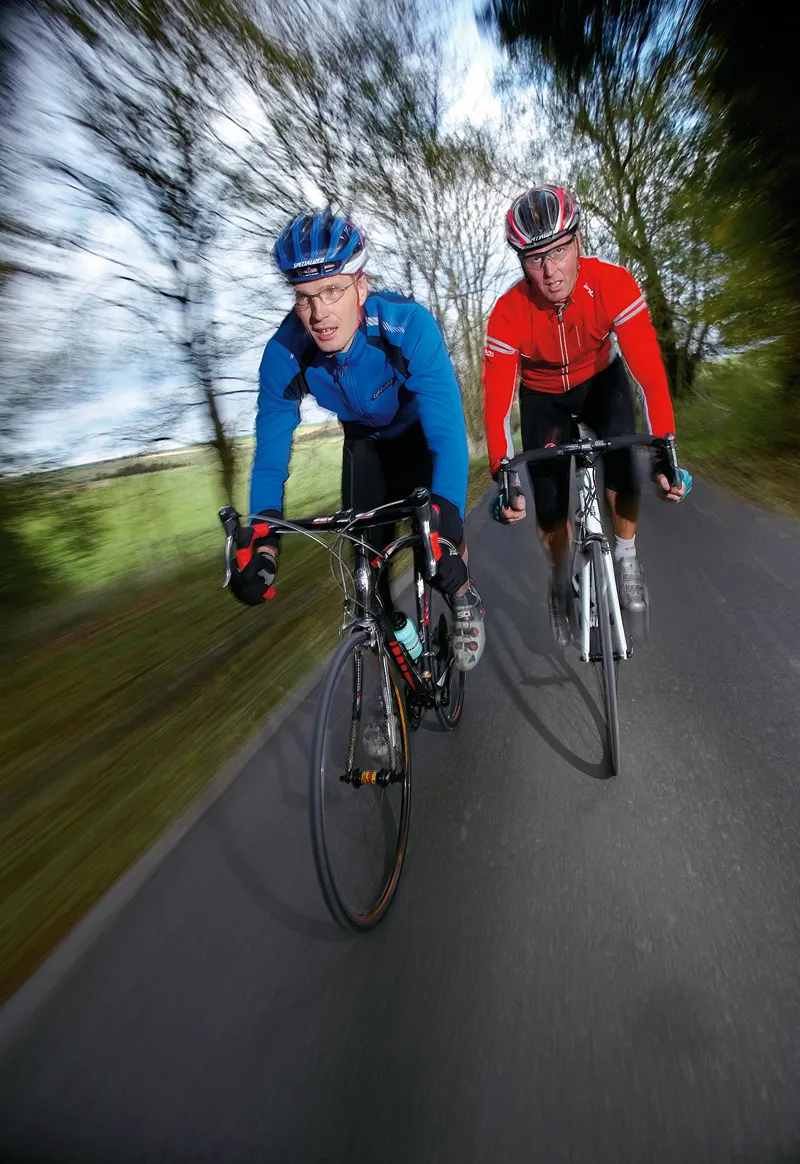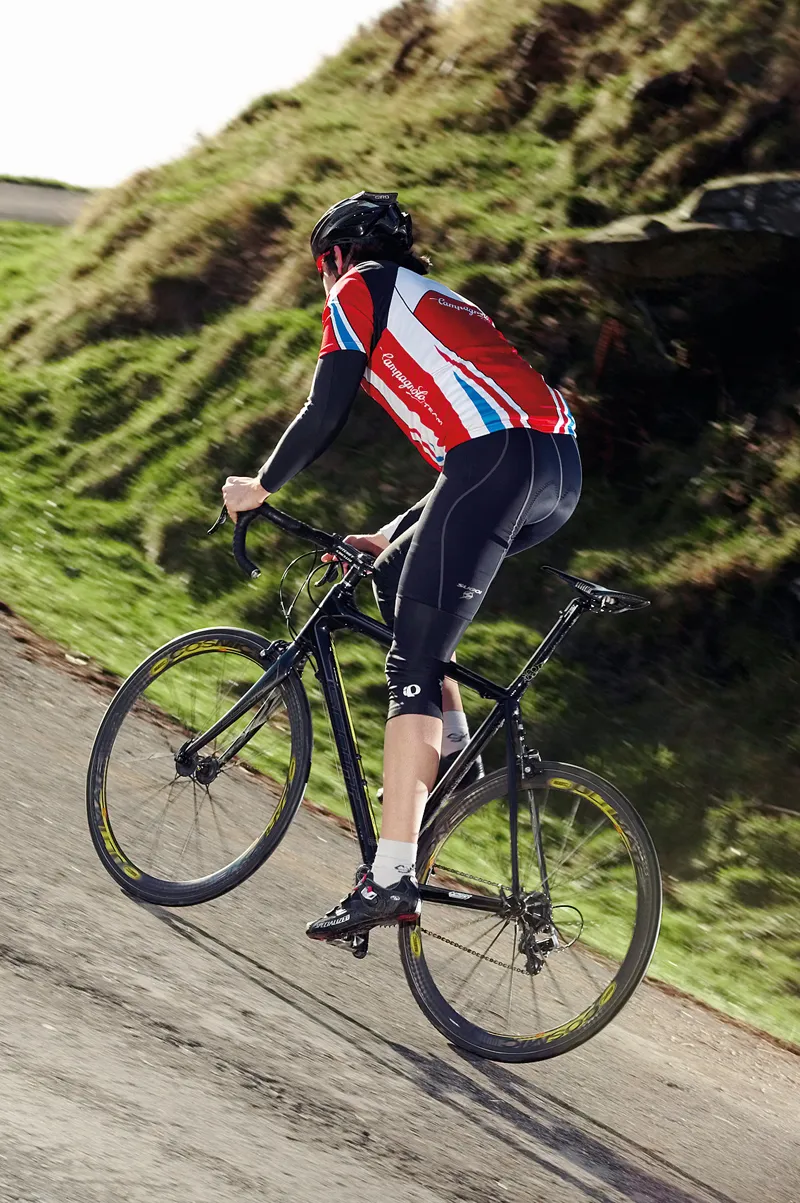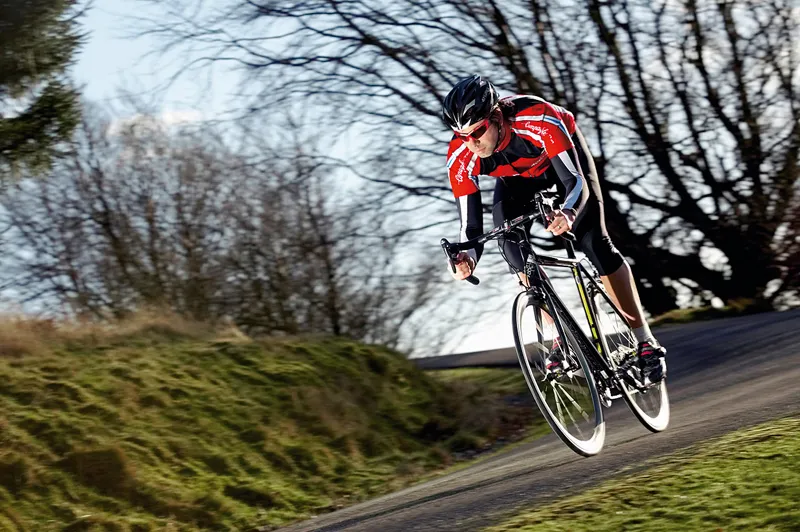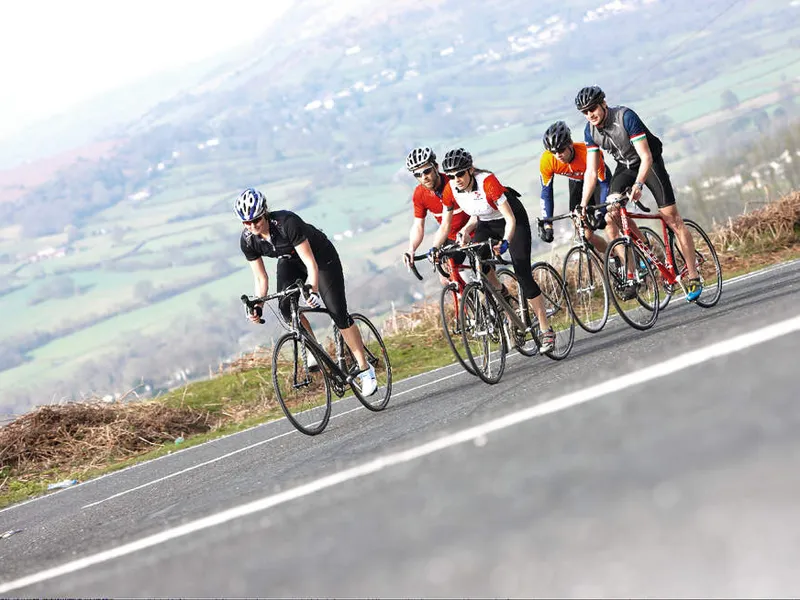On the face of it, cyclists and cricketers don’t have a lot in common but, just as it is for fans of leather and willow, hitting your maiden century is a special moment for those of us who prefer Lycra and wheels.
The satisfaction of finishing your first 100-mile ride never fails to give a smug glow. And whereas scoring 100 runs takes a bit of natural talent – or dodgy bowling – any cyclist can notch up a century with a bit of planning and a structured training plan.
To help you, we’ve put together a programme that’ll get you ready to ride your first 100-miler in 11 weeks – just in time for the 106 mile Cycling Plus Sportive at BikeRadar Live on July 10.
Long and steady
Unsurprisingly, the foundations of endurance are laid on long rides, so these make up the bulk of our training plan, especially in the earliest stages. From a physiological perspective you’ll be increasing your riding economy and your ability to tap your fat reserves for fuel.
Your pace should be steady and you should be able to maintain a conversation at all times. On hills use your gears to keep you in the saddle and spin. “Go long and easy in training and you’ll adapt to the distance,” says Mark Laithwaite from www.theendurancecoach.com. Also, use these rides to experiment with what type of nutrition suits you best.
You’ll notice that your maximum distance in training will be 80 miles; don’t worry, there are a number of reasons for leaving you a bit short. One is to keep the carrot of your first 100 dangling in front of you; another is, if you attempted 100 in training and failed, you might just not bother trying again.
“When training for endurance don’t think you have to cover your target distance in training,” says Mark Beaumont, who in 2008 became the fastest man to circumnavigate the world on a bicycle. “For my round-the-world ride I would be averaging over 100 miles per day, but I never rode that distance while training.”
Beaumont, of course, rode a long way quickly – he managed 18,296 miles in 194 days and 17 hours – and recognises that training to go long isn’t just about getting in slow, steady miles. “I did shorter, higher intensity stuff and that fitness allowed me to ride all day at a lower intensity,” he says.
Including some swifter riding in your regime, as Beaumont did, will make your century ride easier. But adding flat-out sprints or short, painful, big gear grinds to your training isn’t quite what we have in mind.
“Before you think about going faster, stop yourself slowing down,” advises Laithwaite. “If your event lasts six hours and you can’t ride continuously at 16-18mph for that distance then your priority is not sprinting up hills or doing power intervals on your turbo.”
To get your body used to riding at a good speed for a long time you’ll need to work on your threshold pace. In simple terms this is the pace at which lactic acid builds up in your muscles and your body begins to have trouble processing it. In even simpler terms it’s the pace you can just about sustain, but if you’re riding with mates any attempt at conversation will be short-lived.

Threshold training is important when it comes to sticking with a group on a long climb or time trialling to make a cut-off in a sportive. Riding at this pace also makes your body more efficient at dealing with lactic acid. Despite its bad press, lactic is actually converted to glucose or, in other words, fuel.
Of course, you can complete a 100-mile ride on steady state training alone, but by doing these sessions you’ll get round a hell of a lot quicker – and in a lot more comfort! These sessions can either be done on an indoor trainer or on a flat route.
Unless you’re planning a 100-mile ride on the Fens, your route is likely to include some hills, and developing the strength to tackle them is essential for success. You can do this by picking training routes with undulations or by including hill repeats in your training plan. Riding repeats will also let you experiment with gearing and position to find your optimal climbing style.
And if you find that you just can’t get out of the house, don’t fear the turbo trainer. “Time on the road is important but I also do a lot of work on the turbo trainer,” says Matt Carr, manager of Bristol bike shop Mud Dock, a seasoned endurance cyclist with British and European titles to his name.
“Physically there’s no respite of downhills but from a mental point of view the boredom really toughens you up! I reckon an hour on the turbo is as challenging as three or four hours on the road, and when you do then go out and ride for real, you really appreciate it.”
Something else you shouldn’t fear is not riding or, at least, riding very, very gently. Recovering from a long ride or threshold session is just as important as the ride itself. On a recovery ride your effort level should be super-easy and you should barely feel any pressure through the pedals. Choose a flat course and stay in the small chainring – if you’re overtaken by grannies on shopping bikes you’re doing it right.
“Don’t underestimate the value of cross-training to prevent the build-up of repetitive strain injuries and to iron out any muscle imbalances,” says Beaumont. “Injury prevention in training is key.” Swimming or an activity like yoga or pilates will boost your fitness, strength and suppleness as well as aid recovery.

Going mental
As well as training your body, it’s well worth giving your brain a workout before you tackle your first century. As they say, knowledge is power, so knowing as much about the route you’ll be riding on the big day is essential.
“Fatigue can be influenced hugely by your mind and one of the best things you can do before an event is find out what’s in store,” says Laithwaite. “Turning a corner to find an unexpected hill can be a huge blow to your morale. Mental stress is all about perception, it doesn’t matter whether you can ride the hill or not, it’s whether you think you can.
"If you get the opportunity to ride parts of the route in advance then go for it, that way there are no unexpected surprises.” If you can’t get on to the route you’re riding beforehand, even if you know plenty about it you’ll be able to ensure that your training rides mimic it.
If your goal 100-miler is a sportive or audax ride, then you’ll have company. It’s also worth roping in some like-minded riders during your training rides. There is a massive difference between covering 100 miles on your own and riding with a group or in a sportive. Aside from the physical aspect of being able to shelter from the wind and share the work on the front, it takes a special mindset to ride long with just yourself for company.
It’s also a good idea to make your mind forget that you’re actually riding a big distance. “When I’m on a long ride, I break it down into small digestible chunks and try not to think of it as a daunting whole,” says Carr. “Whether it’s one hour, two miles, five miles or even to the next tree, just keep setting small goals.”
Breaking big rides into smaller, bitesized pieces is also something that Beaumont advocates. “It really does work,” he says. “Don’t think about the finishing line. The big picture is often too scary so break it down into things that you can actually affect. Instead of thinking about how far you’ve got to go, concentrate instead on your heart rate, cadence, or your next sip of water.”

Eat your way round
It would be possible to write a whole article, if not a book, on fuelling for endurance. The most important tip is to keep eating and drinking little and often right from the off and not to wait until you start to feel hungry or thirsty.
“Always eat to prevent and never eat to cure,” says Laithwaite. “Your fuel tanks don’t work in the same way as those in your car – fill up that with petrol and you can drive as fast as you like until the fuel runs out. Research has shown that your body get slower as fuel stores reduce so allowing your tanks to reduce to ‘half full’ will cause a drop in speed.”
Laithwaite advises that you start fuelling from the off and keep topping up your tank every 30 minutes. “If you feel great don’t be fooled, you’re eating for the future,” he says. Of course, don’t leave it until your 100-miler before you use this fuelling strategy.
“Eat in training whatever is going to be available to you on the day of your century,” advises Beaumont. “Keep it simple and don’t get overly complicated or technical. Hydration during the ride and on the days leading up to it is crucial. Make sure your nutrition strategy is proactive rather than reactive.”
Also, try to get into the habit of using a recovery drink immediately after you get back from a long ride. You’ll recover faster from the ride, get more training benefits and help prevent the urge to gorge yourself on cake. If the cost of branded recovery drinks puts you off then a homemade banana and milk smoothie provides a good mix of proteins and carbohydrates.
Get with the programme
Our sportive programme is a simple progressive plan lasting 11 weeks. The first seven weeks are spilt into two build periods with an easier recovery week on the third and seventh weeks. These easier weeks are essential for progress and are when many of the body’s physiological adaptations take place. Rest following hard training makes you stronger.
The final build period is a block of three weeks, building up the mileage on your long ride to 80, before week 11 tapers down to the weekend of your first 100. We’ve assumed you’ll do your long, steady ride at the weekend, with your recovery ride the day after. Take a rest day after a tempo or hill session.
Block one: Even at a fairly pedestrian 12mph, the first long ride should take you a couple of hours. If you’re not up to this, build slowly and enter the programme when at this level. Be sure to stick to the different pacings of the sessions.
ArrayBlock two: Although you probably started to feel a bit tired by the end of the second week, the easier third week should have left you super-strong and raring to go. In the first block there was no specific hill work as you needed to develop a bit of strength first; now’s the time to get going on those climbs.
ArrayBlock three: For the first three weeks of this final block you’re building up your mileage, but don’t be tempted to go beyond week 10’s long ride total – do 100 miles now and you’ll have eaten your carrot too early! Make sure you go easy in that last week.
ArrayAbout the Cycling Plus Sportive at BikeRadar Live
The Cycling Plus Sportive will be one of the highlights of this year's BikeRadar Live festival at Brands Hatch on 10-11 July. There'll be a choice of 107-mile and 70-mile routes through Kent, the Garden of England, and taking in the glorious scenery of the North Downs. To find out more, visit the sportive page on the BikeRadar Live website.
You can book online now at www.bikeradar.com/live or call the BikeRadar Live hotline on 0871 230 1085. One-day, weekend and family tickets are available, with prices starting at £15 in advance.

